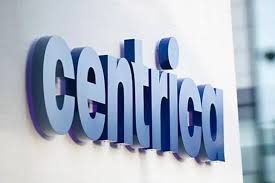Caterpillar, Inc. (NYSE: CAT), a titan in the industrial sector, is a pivotal player in the farm and heavy construction machinery industry. Headquartered in Irving, Texas, this American multinational corporation has a robust market capitalization of $152.23 billion, reflecting its substantial footprint in the global construction and mining equipment market.
Currently trading at $323.68, Caterpillar’s stock has seen a modest increase of 0.03% in its latest session. The stock’s 52-week range reveals a low of $273.94 and a high of $416.88, suggesting that the current price sits comfortably within its historical range, yet below its peak, indicating potential room for growth.
For value-focused investors, Caterpillar’s valuation metrics present an interesting picture. While certain metrics like the trailing P/E ratio, PEG ratio, and EV/EBITDA are not available, the forward P/E ratio stands at 15.27. This figure may suggest that the market has moderately priced in Caterpillar’s expected earnings growth in relation to its current price.
The company’s financial performance, however, warrants a closer look. Despite a challenging environment that led to a revenue contraction of 9.80%, Caterpillar’s return on equity (ROE) is an impressive 55.65%. Such a strong ROE indicates that the company is highly efficient at generating profits from its shareholders’ equity, which is a positive sign for investors seeking robust returns on their investments.
Caterpillar’s free cash flow of over $6.77 billion underscores its strong cash generation ability, providing it with the flexibility to invest in new opportunities, pay down debt, or return value to shareholders through dividends. Speaking of dividends, Caterpillar offers a yield of 1.74% with a conservative payout ratio of 26.98%, pointing to the sustainability of its dividend payments.
The stock’s analyst ratings are mixed, with 13 buy ratings, 13 hold ratings, and a single sell rating. The average target price is $366.37, suggesting a potential upside of 13.19% from the current price. The target price range spans from a low of $272.00 to a high of $427.41, indicating varying levels of optimism among analysts regarding the stock’s future performance.
From a technical perspective, Caterpillar’s 50-day moving average is $321.31, slightly below its current price, which may suggest short-term bullish momentum. However, the 200-day moving average of $357.71 is higher, indicating that the stock is trading below its longer-term trend, possibly presenting a buying opportunity for long-term investors. The relative strength index (RSI) of 56.28 suggests that the stock is neither overbought nor oversold, while the MACD of -2.18, with a signal line of -6.86, requires careful monitoring for any signs of a trend reversal.
Caterpillar continues to innovate and expand its offerings across various segments, from construction and mining equipment to energy, transportation, and financial products. This diversification is a key strength, enabling the company to mitigate risks associated with fluctuations in any single market segment.
For investors seeking exposure to the industrials sector, Caterpillar presents a compelling case with its solid fundamentals, potential upside, and consistent dividend history. As always, potential investors should consider their risk tolerance and investment objectives when evaluating Caterpillar as part of their portfolio strategy.









































